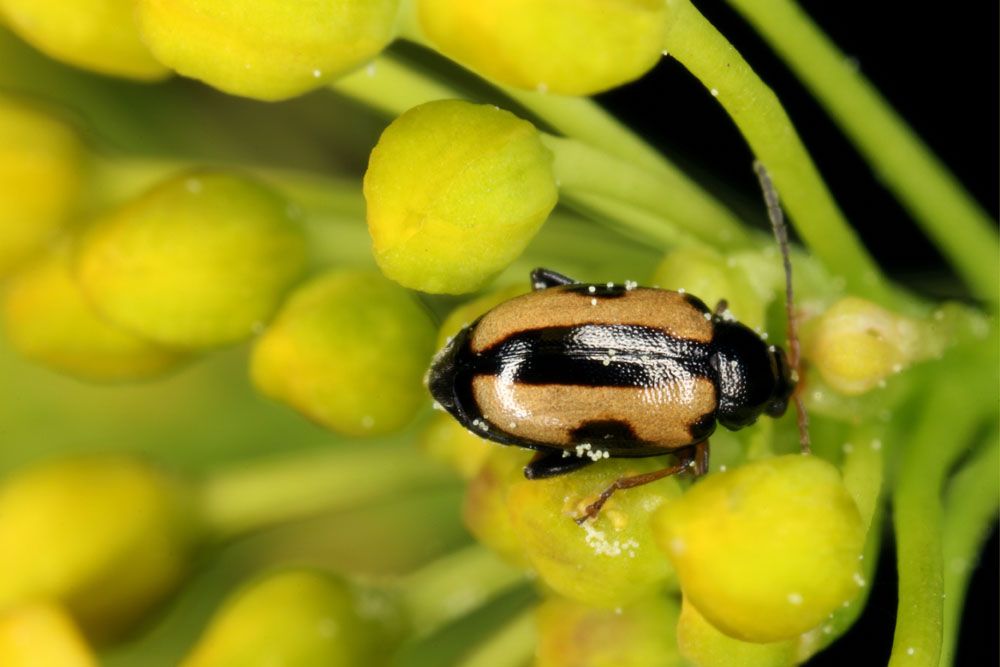
Striped Flea Beetle – Phyllotera striolata
Striped Flea Beetle – Phyllotera striolata
Common Name: Striped Flea Beetle
Latin Name: Phyllotreta striolata
Appearance:
The Striped Flea Beetle is a tiny but dangerous enemy that has certain traits that make it stand out:
- Size:This bug is very small—just a few millimetres long—but has a big effect.
- Striped Pattern:These beetles have various colours on their wings, with long stripes running across them. The stripes are usually shades of black, brown, and yellow.
- Build Like a Flea:The Striped Flea Beetle moves quickly and like its namesake because its hind legs are bigger, so it can jump.
- Egg Stage:Female beetles release eggs in the soil near host plants.
- Larval Stage:Upon hatching, larvae go to the roots of plants to feed and grow.
- Pupal Stage:Larvae that are fully grown pupate in the ground.
- Adult Stage:When they come out as adults, they start eating again, which keeps the cycle going.
